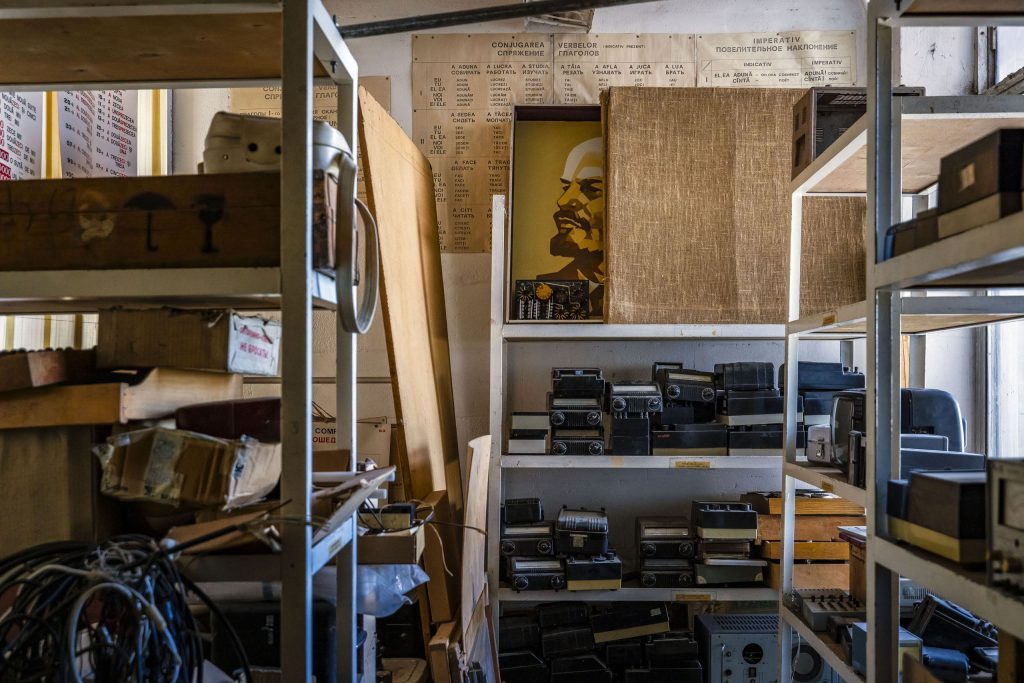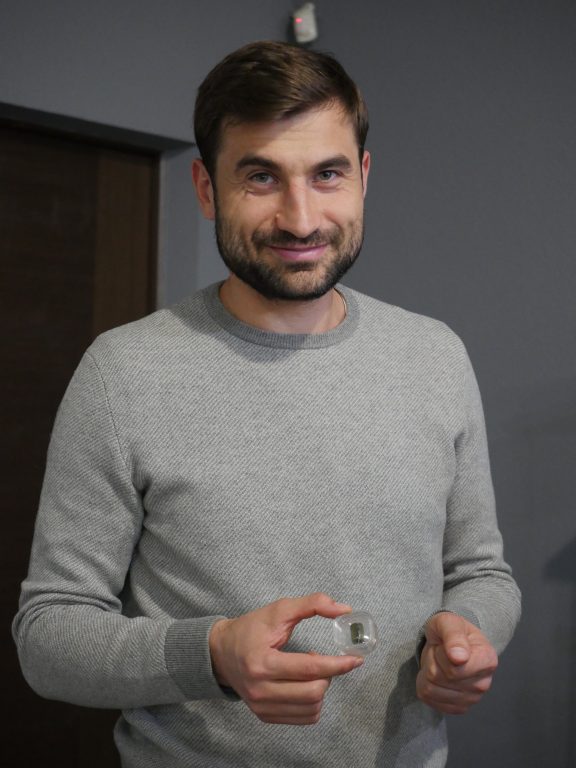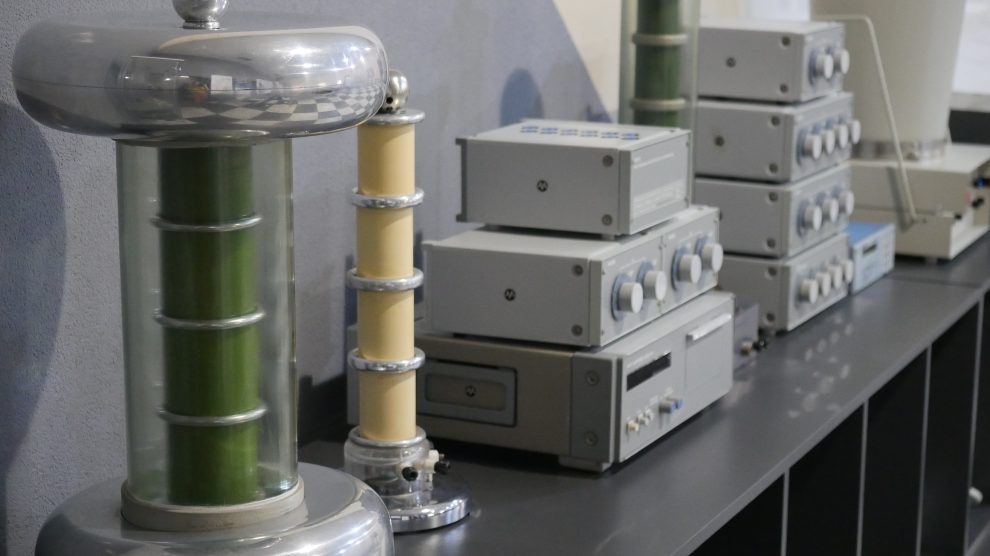In Moldova, a secretive and largely forgotten Soviet-era maker of electrical wires is now at the cutting edge of technology and innovation.
One simple question connects some of the best neuroscientists in the world and an abandoned Soviet factory: How can we understand the brain better?
We know very little about something so vital to us. Researchers have thus far taken most of their data from images or EEG (metal disks placed on the head). But these methods don’t give us a complete picture of what’s happening within our brain cells.
“Imagine you wanted to assess what voters think by standing in the middle of London. You would only hear the murmur, or maybe an occasional scream from an angry voter,” Mihaly Kollo, a London-based neuroscientist, explains. “But to understand what they are really saying, you would have to speak to each voter individually.”
- ‘Now is the time to invest in Moldova’
- Moldova seeks global recognition for its underground world
- Is Moldova’s diaspora ready to return home?
When it comes to the brain, we need to reach each individual (and tiny) brain cell. And to do this, we need something very, very thin.
In Germany, in the early 2010s, a group of researchers—including Kollo— were trying to understand the brain. They wanted to record the electrical activity of each cell.
Kollo’s supervisor, Andreas Schaefer, had an idea. He proposed connecting CMOS chips (similar to those in cameras) to insulated metal wires, inserting them inside the brain, and recording brain activity.
“I thought that was a very good idea,” Kollo tells me. His lab partner, Matt Angle, went along with the idea and decided to develop it further.
But for it to work, they needed very thin and efficient wires. Angle found out about a factory called Eliri in Moldova. Founded in 1959, it served as a research institute for electrical instruments.
Eliri’s researchers used a unique technique, the Taylor Ulitovski process, to create well-insulated wires. They placed metal inside a glass tube and heated it until it melted. They then pulled it into a very thin thread. MIT Technology Review wrote, “The key to solving one of neuroscience’s most intractable challenges lay in a 1960s-era technology invented in the tiny nation of Moldova.”
It was a “very elegant way” to make wires of diameters that could never have been drawn conventionally. “They were unique,” Angle shares. To his knowledge, Moldova makes some of the thinnest and longest nanowires in the world.
That discovery inspired him to visit Moldova as a young researcher.
Soviet secrets
The old Eliri building, in Moldova’s capital, Chișinău, is a dozen stories high and full of computers and technology from the 1970s. There are wires everywhere. On one wall, Lenin peaks out from behind some panels. The building once hid some of the Soviet Union’s top secrets. You couldn’t just walk in. Now, it stands almost empty, and anything futuristic that may have once been here has been degraded into an echoing museum.
“The director came to me very proudly and showed me a piece of rubber,” Angle says about his visit. “It looked like a simple rubber tire. Very flexible. He said it was impregnated with microwires. Then he winked at me and said: ‘Completely invisible to an American radar’. In other words, stealth technology.”

Lenin at the old Eliri factory in Chișinău. Photo: Marcel Varlan
Angle felt like he was in a James Bond movie. The building was full of interesting stories. “It was an incredible visit,” the US researcher recalls. He brought Eliri’s wires back to Stanford University, where he was then carrying out postdoctoral research.
Not long later, another future entrepreneur stepped into the old factory.
Starting from scratch
Marcel Varlan, a Moldovan consultant with an engineering and business background, was sent to review Eliri. He had to assess what should be done with this crumbling real estate and the around six retiring researchers the company still employed.
We meet Varlan in his Chișinău-based training centre and lab. He tells us that he saw an opportunity. “Everything is getting smaller and more complex,” he says. “Not long ago, computers were the size of a room”
Varlan decided to turn Eliri into a nanowire production company. Sent to assess what could be done with the Eliri building, he took over the business instead.
He started researching, searching the internet, talking to people, and going to conferences. He quickly understood bringing an old Soviet factory back to life was much harder than anticipated. Nanowires are a very specific, niche technology.
“A long time ago, Eliri had around 500 engineers developing wires and applications,” Varlan explains. “Nowadays, it’s all gone. You need the whole system and flow, from wire manufacturing technology to integration, testing, and mass deployment. We had to almost start from scratch.”
Half a year later, a Spanish company turned to Eliri with “a huge request” for microwires. For Varlan, it meant increasing production capacity by 50 times almost overnight. “There was no equipment or available people,” he remembers.
More secrets
He started looking around for equipment. But none of what he needed was on sale. Varlan complained to his uncle, who responded: “Build it yourself! You’re an engineer!”
Varlan: “That was the exact moment I was reborn as an engineer, and I started building.” In parallel, he was building a team. “It was crazy! And we succeeded.”
The project with the Spanish company fell through, but it was a good enough trigger to kickstart a new phase at Eliri, a company rising from the dust.
“We started feeling confident about our capacity and ways of quickly designing equipment and building technologies,” Varlan says. He shows us some of the old Soviet equipment he brought from the old factory. He keeps them as artifacts, as a reminder of the past.
Even though Varlan speaks a lot about chances and hunches, his office and lab don’t give any hints of impulsiveness. His perfectly clean table only has one charging cable on it.

Marcel Varlan, Eliri’s CEO, holds wires you can barely see with the naked eye
Most of the equipment in his new lab is built by himself and his staff, whom he educates in-house. He doesn’t expect his young employees to know everything but to be willing to learn and try. He believes that students who have finished university lack creativity and are not able to apply outdated theories.
And even though production has moved to a new building, the secrecy is still there. Varlan shows us around with one condition: no photos or videos can be taken here. It’s all top secret—once again.
‘We’re close’
Angle ended up not using Eliri’s wires in his current lab. He is now the head of Paradromics, a leading developer of brain-computer interfaces, one of Elon Musk’s Neuralink’s biggest competitors.
Mihaly Kollo is now at the Francis Crick Institute, a leading biomedical research centre in London, and still orders Eliri’s golden nanowires.
He wants to understand the brain so that he can heal it.
Kollo predicts that soon, instead of pills, some mental diseases such as Parkinson’s disease will be treated by using stimulating chips that are inserted into brains.
“I think we are close,” he says excitedly. And those chips might perhaps be inserted with nanowires made in Moldova.
This article was co-written by Tiina Kaukvere.
Unlike many news and information platforms, Emerging Europe is free to read, and always will be. There is no paywall here. We are independent, not affiliated with nor representing any political party or business organisation. We want the very best for emerging Europe, nothing more, nothing less. Your support will help us continue to spread the word about this amazing region.
You can contribute here. Thank you.



Add Comment